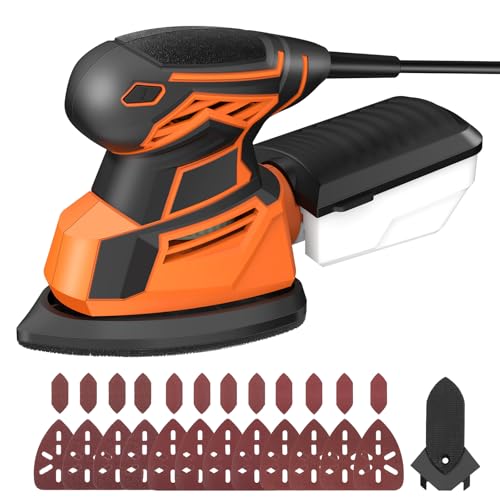Factors to consider when choosing a sander for refinishing cabinets
Refinishing cabinets can give your kitchen or bathroom a fresh, updated look without the expense of completely replacing them. One of the key tools you’ll need for this project is a sander. Choosing the right sander is crucial to achieving a professional and smooth finish. There are several factors to consider when selecting a sander for refinishing cabinets.
Type of sander
When it comes to refinishing cabinets, there are three main types of sanders to consider: orbital sanders, detail sanders, and belt sanders. Each type has its own advantages and disadvantages.
An orbital sander is a versatile option that is suitable for most refinishing projects. It uses a circular motion and can easily remove varnish, paint, and stains. This type of sander is gentle on the wood and won’t leave swirl marks if used correctly.
Detail sanders, as the name suggests, are designed for working on intricate details and hard-to-reach areas of the cabinet. They have a triangular or rectangular shape and a small sanding surface, making them ideal for corners and edges.
Belt sanders are the most powerful type of sander and are best suited for heavy-duty refinishing projects. They use a continuous loop of sandpaper and can quickly remove material. However, they can be aggressive and may leave marks if not used carefully.
Size and weight
When choosing a sander for refinishing cabinets, it’s important to consider the size and weight of the tool. Cabinets are typically located in tight spaces, such as kitchens and bathrooms. A compact and lightweight sander will be easier to maneuver and control in these areas.
A smaller sander is also beneficial when working on detailed sections of the cabinet. It allows for greater precision and accuracy. However, if you have a large number of cabinets to refinish, a larger sander may be more efficient.
Dust collection
Sanding generates a significant amount of dust, so it’s crucial to choose a sander with an effective dust collection system. A sander with a built-in dust collection bag or canister will help minimize the amount of dust that gets released into the air and onto your work area.
Some sanders also have the option to connect to a vacuum cleaner, which provides even better dust collection. This is especially important if you have respiratory issues or allergies.
Versatility
If you plan on tackling other projects in the future, it’s worth considering a sander that offers versatility. Some sanders come with interchangeable pads or attachments, allowing you to switch between different sanding techniques or tasks.
For example, an orbital sander that can be used for both rough sanding and fine finishing will be a valuable tool in your workshop. This versatility can save you money in the long run by eliminating the need to purchase multiple sanders for different projects.
Budget
Lastly, it’s important to consider your budget when choosing a sander for refinishing cabinets. Sanders can range in price from affordable to high-end professional-grade models.
While it’s tempting to choose the cheapest option available, investing in a quality sander will yield better results and save you time and frustration in the long run. Look for a sander that offers a good balance between price and performance.
Ultimately, the best sander for refinishing cabinets will depend on your specific needs and preferences. Consider the type of sander, size and weight, dust collection, versatility, and budget when making your decision. With a high-quality sander, you’ll be able to achieve a smooth and professional finish that will transform your cabinets.






